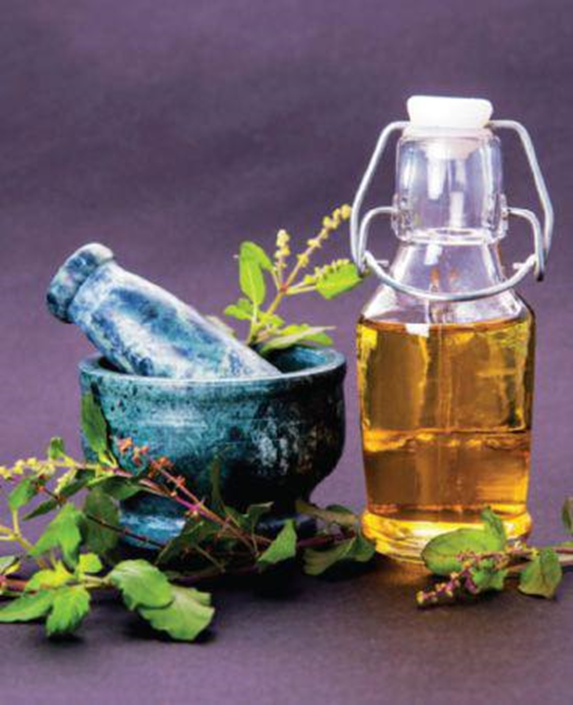Sacred basil label
Common names: Holy basil, queen of herbs, sacred basil, tulsi
Botanical name: Ocimum tenuiflorum var. sanctum
Family: Lamiaceae
Aspect & soil: Full sun; well-drained soil
Best climate: Tropics, subtropics, temperate, Mediterranean
Habit: Perennial
Propagation: Seed
Difficulty: Easy
Sacred or holy basil is a plant that’s held in great reverence by many cultures and religions (particularly Hindu) and has many medicinal benefits. It’s also an easy-to-grow addition to the herb garden and a highly fragrant plant that’s edible and tasty.
Flavourwise, it has a more aniseed taste than traditional sweet basil (Ocimum basilicum), which is the most popular of all the basils. The leaf is also slightly smaller and a little tougher than sweet basil, with a slightly hairy purple stem. The olive-green leaves of sacred basil are also tinged with purple. It grows to around 30-90cm high.
This plant comes from India but is grown widely through Southeast Asia. As well as being valued for cooking (it’s particularly popular in Thai cooking) it has many medicinal uses. It’s particularly used to relieve stress and is considered to be a rejuvenative herb (also known as an adaptogenic herb). It’s rich in essential oils.
In India this plant is valued for both physical and spiritual properties. This is reflected in one of its common names — tulsi (also sometimes tulasi). For Hindus, the herb tulsi is viewed as a goddess and a manifestation of Lakshmi, the goddess of wealth, fortune and prosperity and wife of the god Vishnu. The leaves are used in some religious ceremonies, while the stems or roots are made into prayer beads known as tulsi rosaries.
Throughout Asia, sacred basil is traditionally grown in an earthenware pot and its leaves are used to make tea. To make a restoring cup of holy basil tea, steep a few leaves in boiling water. It can also be used as a fresh herb in salads or as a substitute for fresh basil. As it’s very pungent, taste it before adding too much to a dish.
A good way to grow this aromatic herb is in a pot but it will grow in any sunny, well-drained garden. As it matures, sacred basil produces spires of mauve flowers that are highly attractive to pollinating insects, including bees, native bees and butterflies. As it flowers over a long period, it’s a great addition to any pollinator garden.

GROWING TIPS
Sacred basil can be grown from seed through spring and summer. Sow seeds in pots or punnets or direct sow where they are to grow. In warm conditions, plants grow rapidly and strongly and are not troubled by pests or diseases. Tip prune occasionally to encourage a bushy, leafy plant. Fertilise in spring and liquid-feed occasionally from late spring to autumn. In cold winter areas, this plant may need to be treated as an annual, but in mild winter zones plants continue to grow, providing both leaves and flowers year-round.
DID YOU KNOW?
Dried sacred basil leaves can be mixed with grains to deter insects.


